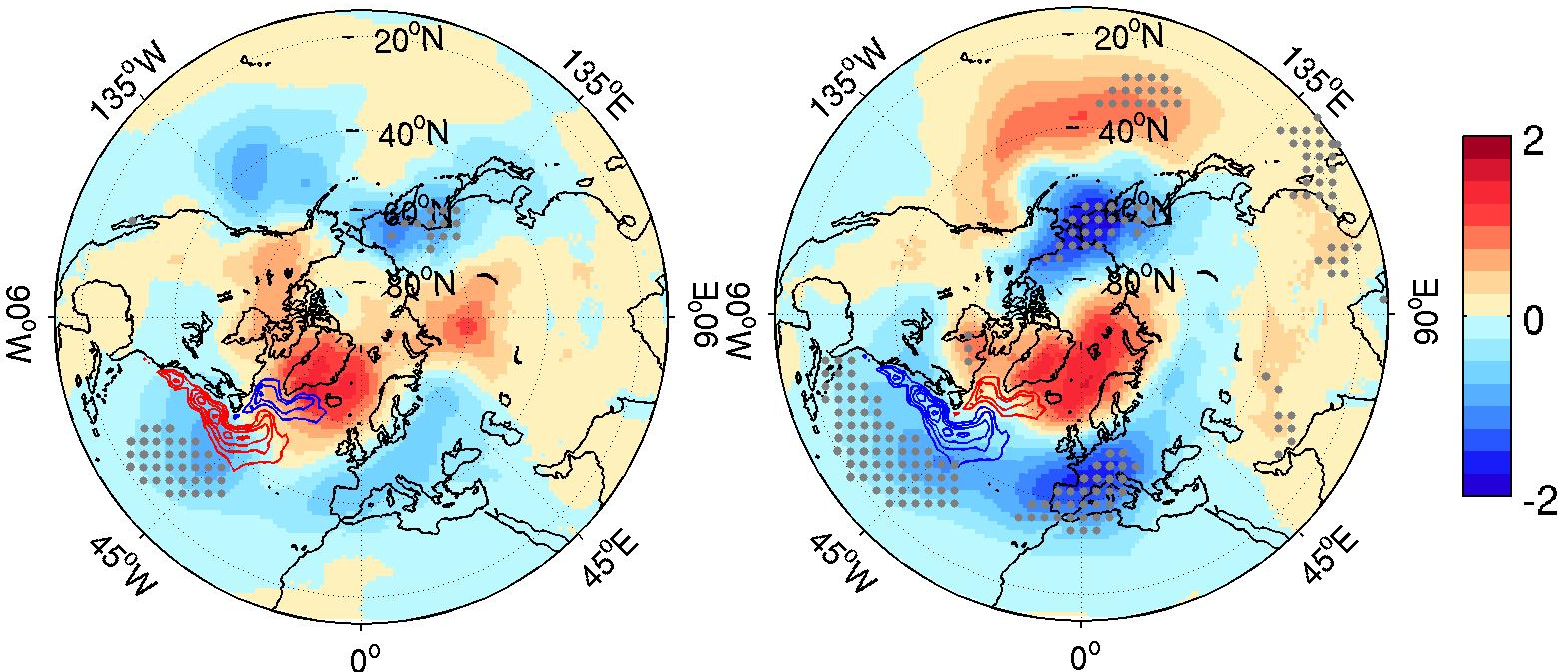NASA PO: Coupling Between the Atmospheric Intra-Seasonal Variability and Ocean Circulation in the Northern Hemisphere (2015-2018)
This study investigates how the ocean circulation interacts with the atmospheric intra-seasonal (8-90 days) and synoptic (2-8 days) variability on the interannual to multi-decadal time scales based on the satellite and in-situ observations, atmospheric and ocean re-analyses, and regional climate modeling. Particular emphasis will be placed on the role of ocean-to-atmosphere feedbacks over the Gulf Stream (GS) / North Atlantic Current (NAC) in the North Atlantic, and the Kuroshio-Oyashio Extension (KOE) in the North Pacific. These western boundary currents and their extensions (WBCs) are not only the regions of largest ocean variability but also of exceptional ocean-atmosphere interaction. An important contrast between the ocean and atmosphere in terms of the poleward heat transport is the very different role of mean circulations and eddies therein. In the ocean, most of the northward heat transport is carried by the mean large-scale circulation in the extra-tropics, while the transient eddies play a significant role in the atmospheric heat transport, especially north of ~40degN. Therefore, interaction between the large-scale ocean circulation and the atmospheric transient eddies near the GS and KOE must be a crucial aspect of the northward heat transport, a fundamental regulator of the earth’s climate.
Intra-seasonal as well as the synoptic atmospheric variability is shaped primarily by the intrinsic atmospheric weather. However, interannual and longer time scale modulation of the transient atmospheric variability is suggested to be associated with slowly varying ocean, especially in the energetic WBCs. Previous studies on the ocean-to-atmosphere feedback associated with the strong WBC fronts, however, tend to focus on either the synoptic storm track variability or seasonal mean atmospheric circulation. Intra-seasonal variability, the focus of this study, not only bridges these two time scales, i.e. the weather and climate time scale, but actually exhibits greater variability than the synoptic band with very different spatial patterns, indicative of a different role in the climate system. As such, recent studies suggest that atmospheric blocking, a prominent weather phenomena in the intra-seasonal time scale, may drive the Atlantic Multi-decadal Variability (AMV) in the North Atlantic SST. The specific objectives of the proposed work are to:
1. Identify robust response of the atmospheric circulation and poleward atmospheric heat transport on the intra-seasonal time scale to the interannual-to-multi-decadal ocean variability associated with the GS/NAC and KOE. 2. Understand the associated mechanism of, and the relationship between, the intra-seasonal and synoptic atmospheric responses to slowly varying GS/NAC and KOE. 3. Examine the role of ocean-to-transient atmosphere feedback in changes of the seasonal mean atmospheric circulation and associated poleward atmospheric heat transport on longer time scales, and the implication on AMV and Pacific Decadal Variability (PDV).
Our initial focus will be with data analyses based on observational indices of the WBC variability, followed by the examination of the regional atmospheric model-derived intra-seasonal and synoptic responses to persistent, ocean-forced SST variability associated with the observed WBC variability. Our proposed research directly addresses the primary scientific goal of the NASA PO program to understand the ocean’s role in climate variability and its prediction by investigating the responses of atmospheric circulation and resulting poleward heat transport to the changes in the ocean circulation in WBCs.
PIs: Young-Oh Kwon, Terry Joyce, Hyodae Seo
Physical Oceanography Department
Woods Hole Oceanographic Institution
Award: $494,210
Duration: 2013-2015
NASA Physical Oceanography

